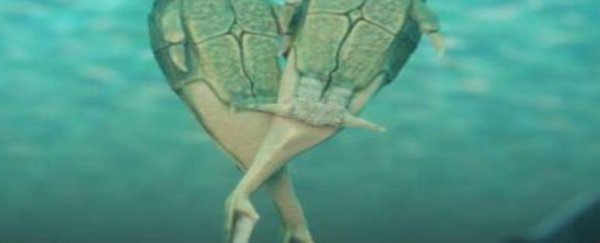Scientists have traced the roots of sexual reproduction and found that it all started in armoured placoderm fish, 385 million years ago.
A team of researchers from Flinders University in Australia have studied male fossils of the ancient Scottish fish, Microbrachius dicki, and made a breakthrough discovery - large bony L-shaped claspers used for transferring sperm to the female. They also found that the females had a small bony structure at their rear to help dock the male organs into position for mating.
The fascinating findings were published today in the journal Nature, and represent the first use of internal fertilisation and copulation for vertebrate animals, including humans.
The unique anatomy of the fish suggests that they probably mated side by side, with their bony jointed arms locked together. The study also highlights the first time in vertebrate evolution that males and females had distinct differences in their reproductive structures to assist with mating.
"These L-shaped claspers on the male would reach to the centre of the female, where she had two little genital plates which were pretty rough, a bit like cheese graters, so that they could lock the male clasper into position like velcro," said John Long, lead researcher, as reported by ABC. "This enabled the males to manoeuvre their genital organs into the right position for mating."
These fish are a type of placorderms, which previous studies have shown are the earlisest vertebrate ancestors of humans. These bony placoderm fish were 8 cm in length, and lived in ancient lakes in Scotland about 385 million years ago. It's known that Microbrachius means "little arms", but until now, scientists could not identify the purpose of these arms. These fossils have solved the profound mystery, and it is now thought that these arms were to help the male position his claspers into the female genital area.
"Claspers in these fishes demand one of two alternative, but equally provocative, scenarios: either an unprecedented loss of internal fertilisation in vertebrates, or the coherence of the armoured placoderms as a single branch in the tree of life," said Dr Friedman, a palaeobiologist from the University of Oxford, UK in a press release. "Both conclusions fly in the face of received wisdom, and suggest that there is still much to discover about this critical episode in our own extended evolutionary history."
Watch how the team made the discovery:

The Microbrachius fossils are on public display in the foyer of the South Australian Museum from today.
Source: Flinders University
